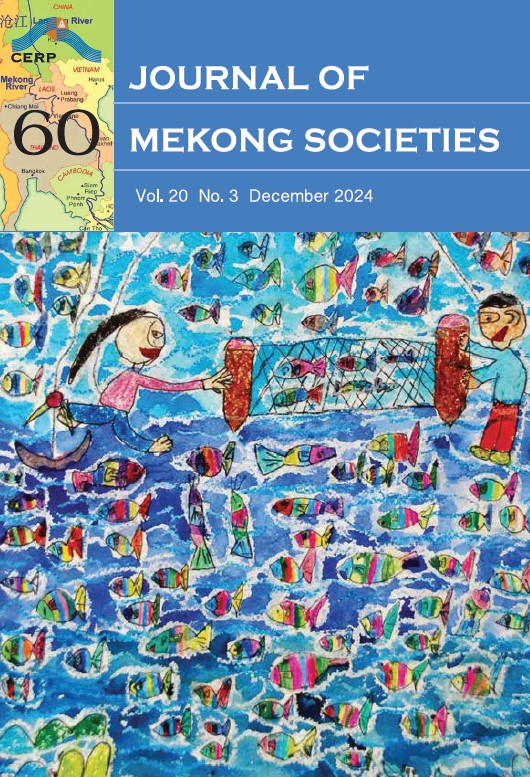Functional Extension of the Verb for ‘to like’ in Thai to a Frequentative Aspectual Marker
Main Article Content
Abstract
The Thai verb cʰɔ̂ːp, denoting ‘to like,’ as prescribed in Thai dictionaries, signifies the subject’s psychological affinity towards something or the enjoyment of doing something. The usage of cʰɔ̂ːp as indicative of ‘liking’ poses a challenge for Thai language speakers when they encounter it in contexts where expressing enjoyment would be considered inappropriate. Drawing upon authentic language data from X (formerly Twitter), this investigation scrutinized the functional extension of the Thai verb cʰɔ̂ːp to assume the role of a frequentative aspect marker. It posits a four-stage chain of functional extension for the aspect marker cʰɔ̂ːp, encompassing the initial stage, the bridging context, the switch context, and the conventionalization. The emergence of the frequentative aspect of the term cʰɔ̂ːp is argued to be pragmatically derived via pragmatic inferencing. By delineating the function of the term cʰɔ̂ːp as a frequentative aspectual marker, it becomes possible to elucidate its usage in adverse circumstances. This analysis contributes to the comprehensive establishment of the aspectual marker cʰɔ̂ːp within the framework of Thai grammar.
Article Details

This work is licensed under a Creative Commons Attribution-NonCommercial-NoDerivatives 4.0 International License.
References
Bybee, J. and Dahl, Ö. (1989). The creation of tense and aspect systems in the languages of the world. Studies in Language, 13(1), 51-103.
Bybee, J., Perkins, R., and Pagliuca, W. (1994). The evolution of grammar: Tense, aspect, and modality in the languages of the world. Chicago: Chicago University Press.
Carlson, G. (2012). Habitual and generic aspect. In R. I. Binnick (Ed.). The Oxford handbook of tense and aspect. New York: Oxford University Press.
Comrie, B. (1976). Aspect: An introduction to the study of verbal aspects and related problems. Cambridge: Cambridge University Press.
Harris, A. C. and Campbell, L. (1995). Historical syntax in cross-linguistic perspective. Cambridge: Cambridge University Press.
Heine, B. (1992). Grammaticalization chains. Studies in Language, 16(2), 335-368.
Heine, B. (1993). Auxiliaries: Cognitive forces and grammaticalization. New York: Oxford University Press.
Heine, B. (2002). On the role of context in grammaticalization. In I. Wischer and G. Diewald (Eds.). New reflections on grammaticalization. Amsterdam: Benjamins.
Heine, B. and Kuteva, T. (2002). World lexicon of grammaticalization. Cambridge: Cambridge University Press.
Heine, B. and Kuteva, T. (2007). The genesis of grammar: A reconstruction. Oxford: Oxford University Press.
Jaroenkitboworn, K. (2009). The polysemy of “chɔ̂ɔp” in Thai: A pragmatically motivated phenomenon. Manusya: Journal of Humanities, 12(3), 75-82.
Kuteva, T. (2001). Auxiliation: An inquiry into the nature of grammaticalization. New York: Oxford University Press.
The Royal Institute. (2013). Photchananukrom chabap ratchabandittayasathan phoso 2554. (In Thai) [Thai dictionary of the Royal Institute, BE. 2554]. Bangkok: The Royal Institute.
Tingsabadh, M. and Abramson, A. (1993). Thai. Journal of the International Phonetic Association, 23(1), 24-28.
Website
Dahl, Ö. and Velupillai, V. (2013). Tense and aspect. In M. S. Dryer and M. Haspelmath (Eds.), The world atlas of language structures online. Retrieved April 5, 2023, from https://wals.info/chapter/s7


